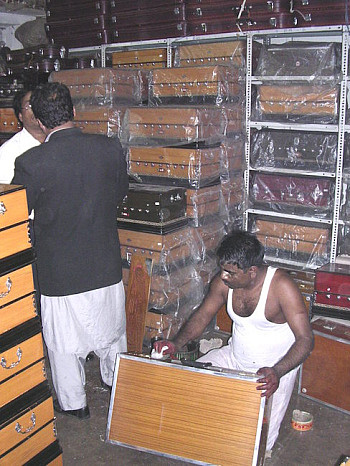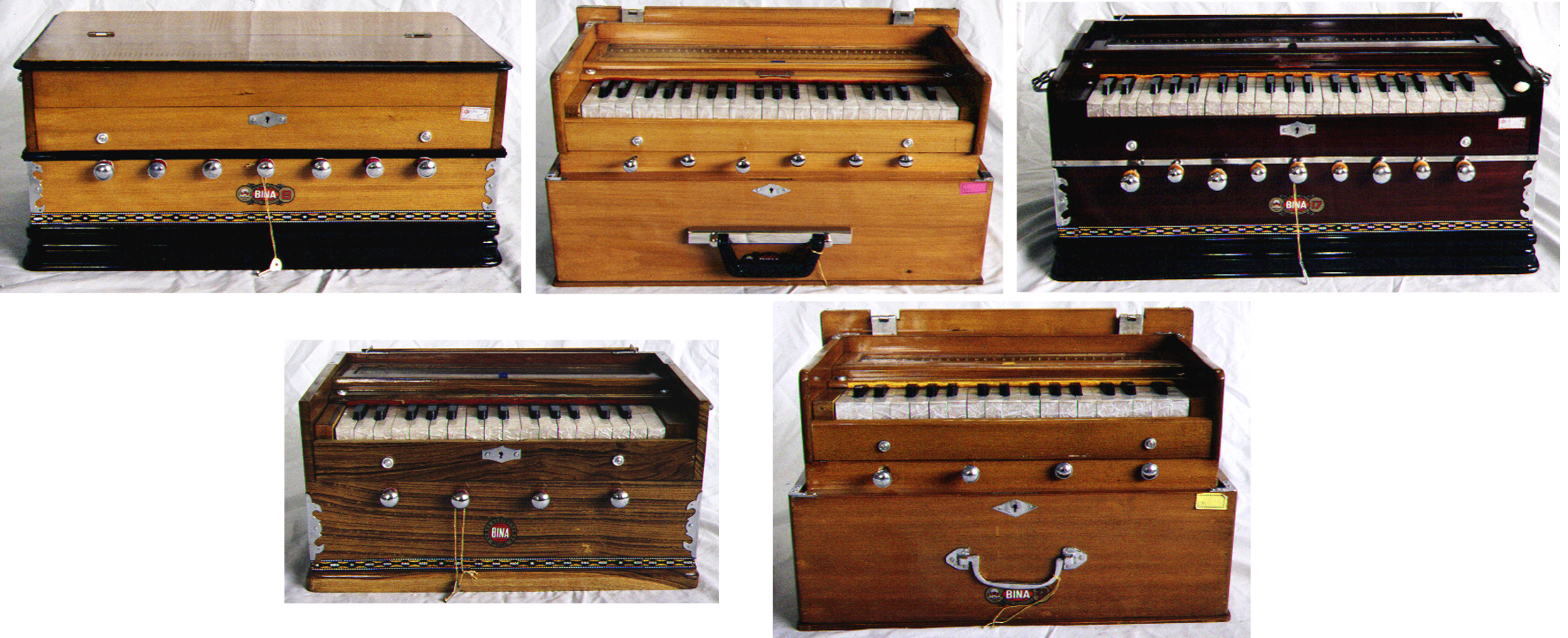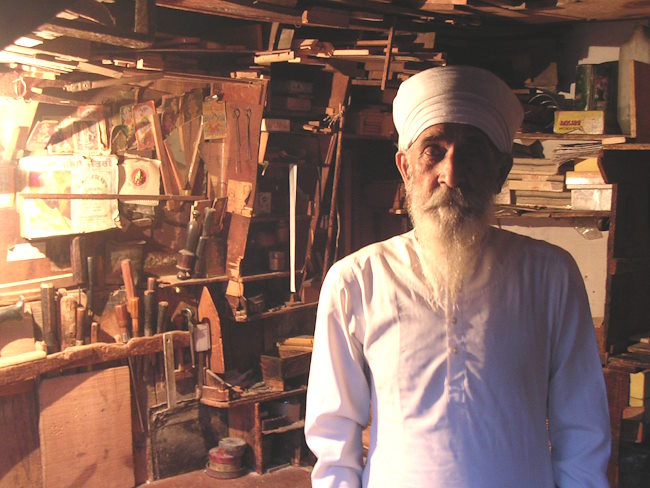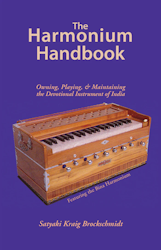Unlike many other mass-produced instruments, which can be relied upon for consistency, every harmonium that’s hand-made in India has a unique character. And because your harmonium will be an intimate partner in your sadhana (spiritual practices), you want to make sure that the partner you choose is a good match.
Matching personalities
During one pilgrimage to India in 2005, a number of other Ananda members—some who were visiting and others who were in the country to help establish Ananda’s work there—wanted to buy harmoniums for themselves. So, we all piled into a taxi and headed to the Bina store in Delhi, where there were literally hundreds of harmoniums of many different piled literally from floor to ceiling!

As author of the recently published Harmonium Handbook, the others each asked me to help select a suitable harmonium. With each person, we first identified the appropriate models that fit their budget and had the clerks pull out a number of instruments for us to play. I was amazed at the variation. Some had a brighter sound, others a mellower tone. Some were a little more relaxed on the acoustical “attack” (how quickly the sound is produced), whereas others were more assertive. Some could produce a quieter, sustained tone, whereas others had a greater dynamic range.
Every one of them was, like I said, different, just like the devotees who would be bringing these instruments into their meditation rooms. As such, we greatly enjoyed matching the characteristics of the instruments to the characteristics of the different people. “This one,” I would say, “feels like David. This one sounds a lot like Marianne.” And so it proved—everyone came away from the store that day with a new relationship.
Now, you’ll not likely have as much variety to choose from if you’re not purchasing an instrument in India. Depending on the retailer, you may have only a few to choose from, or perhaps dozens. Still, the same selection process applies.
Selecting the features
First, look at the instruments that match your budget. Less expensive harmoniums tend to be smaller (that is, fewer notes on the keyboard) and have fewer stop-knobs on the front, which of course makes them less expensive to manufacture. For the most part, the extra knobs are either built-in drones or extra air-stop knobs, which aren’t typically used in devotional chanting to begin with. Thus, there’s little reason to incur the extra expense for those features.
The more important consideration is the size of the harmonium. There are 2½ octave models that are less expensive than 3¼ and 3½ octave models, and the smaller size might be more comfortable for you or better suited to your space. However, the smaller size means less air capacity within the instrument, which can make it harder to sustain a continuous sound. But again, that’s a good reason to play the instrument before you buy it.

If you’re planning to carry your harmonium to different venues, you might want a collapsible model rather than a “standard” (non-collapsible) one. Collapsible harmoniums do cost a little more and standard models are still rather portable, so make sure that this particular aspect is what you need.
Given the selection you have to work with, you may find different harmoniums that have more or less the same configuration but differ widely in price. Why is this? It’s because the lower-priced models are probably those made by apprentice craftsmen in India, whereas the higher-priced models are made by the more experienced artisans. (My own instrument, which carries the “SNT” suffix, was made by Bina’s former master craftsman shown in a 2005 photograph below. It was a joy to watch him work.)

Test drive
Once you identify the instruments within your budget, play each one of them in turn. Feel how they resonate with your inner being (or not), because that’s the part of yourself that you’ll be sharing with the instrument during your chanting practice. Again, this instrument is going to be an intimate partner in your sadhana, so evaluate each one’s sound from that standpoint.
If you’re looking at collapsible models, be sure to close and open each instrument a few times. Some individual harmoniums can be frustrating to open and close, which is not, I imagine, a frustration that you care to have in your life!
If you’re buying through an online retailer and don’t have direct access to the instruments, then ask to hear the differences. Ideally, set up a short video call so you can have a salesperson put each harmonium through the same exercises that you’d do in person. Also ask about the store’s return and exchange policy: you’re making a long-term investment here, so make sure you can find the right instrument. Don’t feel hurried. If needs be, explore instruments from multiple retailers.
Care and maintenance
 Whatever instrument you ultimately purchase, there are some simple care guidelines that ensure your instrument serves you for many years. These can be found in Chapter 2 of The Harmonium Handbook, along with a more detailed history of the instrument and guidance on different playing styles.
Whatever instrument you ultimately purchase, there are some simple care guidelines that ensure your instrument serves you for many years. These can be found in Chapter 2 of The Harmonium Handbook, along with a more detailed history of the instrument and guidance on different playing styles.
If kept away from environmental extremes (like being left in a hot car, sitting in direct sunlight, or being exposed to wide changes in humidity), a harmonium in good working order should serve you problem-free for many years.
However, instruments can develop various problems over time (not counting having a dog take a bite out of the bellows, as with an instrument I once repaired). Ask your retailer if they make any provisions for service after the sale. Hopefully they can recommend a suitable technician. (For example, I work with Inner Path in Nevada City, CA, to check over every instrument that arrives from India and correct any problems.) It’s also possible for a harmonium to develop issues if it’s being shipped to you, in which case the instrument might need some adjustment.
Fortunately, many adjustments are relatively simple. The Harmonium Handbook also contains detailed instructions on opening the instrument as well as a troubleshooting guide for common issues, including tuning.
For more information
For a list of Ananda retailers, see Where can I buy a harmonium?
